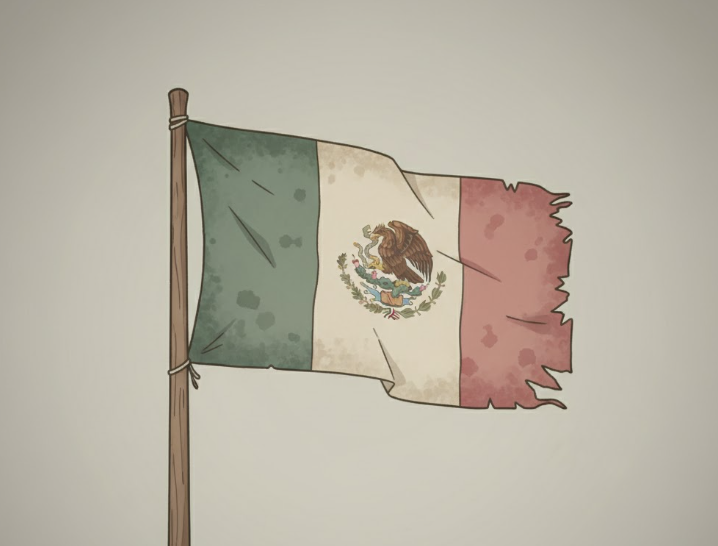
What’s Blocking Mexico’s Push for Teen Mental Health
In a small rural clinic in Chiapas, a 17-year-old girl sits with her mother, explaining that she hasn’t slept well in weeks. She’s been anxious, skipping school, and sometimes thinks about ending her life. The nurse listening to her story has compassion—but not the tools, training, or referral network to help.
Scenes like this are becoming more common across Mexico. Suicide is now the third leading cause of death among young people aged 15–24, yet adolescent mental health remains an afterthought in national policy and budgets.
A new study published in Public Health (Ambe-Cohen et al., 2025) explores why this gap persists—and what can be done to close it. Drawing on interviews with 24 experts and a two-round policy Delphi process, the research identifies deep structural barriers that prevent Mexico from making adolescent mental health a political and practical priority.
The Weight of an Overlooked Burden
Globally, mental health conditions account for 16 percent of the disease burden among youth. In Mexico, nearly 7 percent of adolescents report depressive symptoms, and suicide rates among young people have risen by 25 percent since 2018. The COVID-19 pandemic accelerated these trends, particularly for low-income youth.
In Chiapas, Mexico’s poorest state, one in five adolescents experiences anxiety and nearly one in three reports depression. Despite this, national spending on mental health actually fell by nearly 10 percent between 2013 and 2021, with about 80 percent of funds still going to psychiatric hospitals rather than community-based care.
The contradiction is stark: public awareness is rising, but policy commitment is lagging.
Four Barriers to Political Priority
Using Shiffman’s global health network framework, the researchers analyzed the politics behind adolescent mental health (AMH). Four factors stood out—each one a missing piece in the country’s mental health puzzle.
1. Defining the Problem
Even experts disagree on what “adolescence” means. Some government programs target ages 12–29, while communities in rural Chiapas use entirely different cultural definitions of youth. Without shared language and indicators, it’s hard to design services or measure progress.
Participants across sectors agreed that the most urgent problems are suicide, self-harm, depression, anxiety, and substance abuse, all intertwined with social suffering—poverty, violence, and family stress. But these issues are often framed as individual pathologies rather than structural challenges, leading to fragmented and reactive responses.
2. Positioning the Issue
While mental health has become a more visible topic—especially after COVID-19—visibility hasn’t translated into sustained political action.
Interviewees noted that public conversations often stop at awareness, not at funding or reform. Messaging tends to rely on social media or school programs, with little coordination to reach policymakers or the general public in accessible language.
Participants from rural regions emphasized that effective communication must reflect local realities—sometimes using agricultural or religious metaphors to make sense of emotional distress. Framing mental health as something that affects everyone, not just “the ill,” remains a work in progress.
3. Building Coalitions
Coalition-building emerged as both the biggest gap and the greatest opportunity. While some government institutions collaborate internally, there is little sustained coordination between public agencies, NGOs, academia, and youth advocates.
One NGO representative put it plainly:
“It’s not that easy, but it’s an existing institution here, and we have to work with what exists—even if it’s not ideal.”
Despite the fragmentation, there’s energy to build on. The study found a strong sense of shared motivation among participants—people who care deeply about adolescent well-being but operate in isolation. Creating a cross-sector network, similar to UNICEF’s Global Coalition for Youth Mental Health, could unite these efforts and give them national visibility.
4. Strengthening Governance
Perhaps the most worrying finding is that many participants couldn’t identify who leads adolescent mental health nationally. After years of institutional reshuffling—from Seguro Popular to INSABI to IMSS-Bienestar—roles remain unclear, and programs risk being lost in transition.
Public officials say they align with the Presidency or Ministry of Health, but outside partners see no clear coordination. Even recent reforms to the General Health Law, which emphasize community-based and recovery-oriented care, have yet to translate into tangible improvements on the ground.
Governance isn’t just about policy—it’s about leadership, accountability, and continuity. Without those, every reform risks becoming a revolving door.
What This Means in Practice
For Policymakers
- Create shared definitions and indicators of adolescent mental health so that data and programs are comparable across states.
- Form a cross-sector leadership body including education, youth, and civil-society actors to coordinate resources.
- Align funding with rhetoric—increased attention must come with measurable budget growth for community-based programs.
For Civil Society and NGOs
- Build a national coalition that brings together health workers, educators, and youth advocates under a single banner.
- Leverage storytelling and social media to humanize the issue and shift stigma toward understanding and support.
- Train community leaders to act as first-line mental health allies in rural and underserved regions.
For Schools and Communities
- Empower teachers and parents with emotional-literacy tools. The study found broad agreement that these groups are best positioned to help adolescents regulate emotions early.
- Integrate peer-to-peer programs like Contacto Joven and Línea de Vida into school systems to normalize help-seeking behavior.
The Road Ahead
The findings offer both a warning and a window of hope. Awareness of mental health has never been higher in Mexico—but awareness alone doesn’t save lives. Political prioritization requires clear leadership, reliable funding, and coordinated action across institutions and communities.
The researchers call for a new generation of coalition-building, where enthusiasm and expertise are channeled into shared advocacy. For many of the experts interviewed, this work is personal. As one young advocate said, “We all want to support each other to achieve it—the challenge is keeping the purpose alive along the way.”
What’s Next?
Turning these insights into practice means confronting uncomfortable questions:
- How can Mexico balance national leadership with local autonomy in mental health policy?
- What mechanisms will ensure reforms translate into budgets, not just laws?
- How can youth themselves help define—and lead—the agenda for their own well-being?
Answering those questions could mean the difference between continued fragmentation and a genuine national commitment to adolescent mental health.
Because every young person, from Chiapas to Mexico City, deserves the chance not only to survive—but to thrive.



